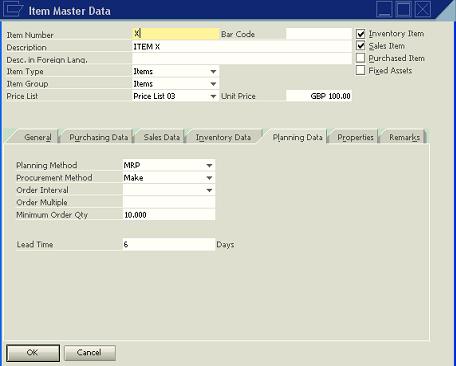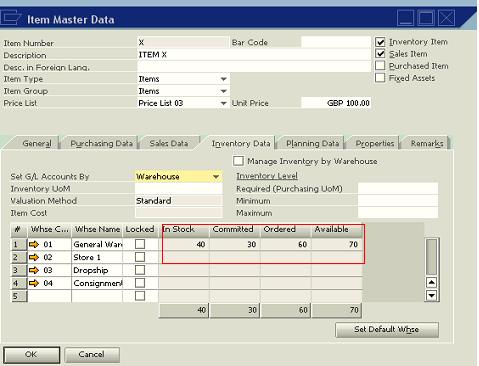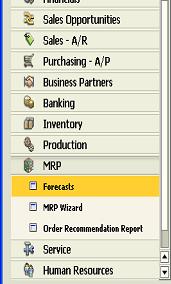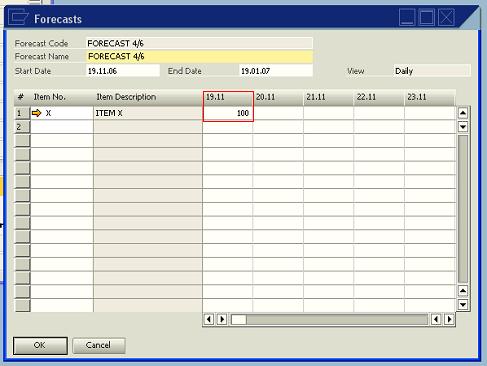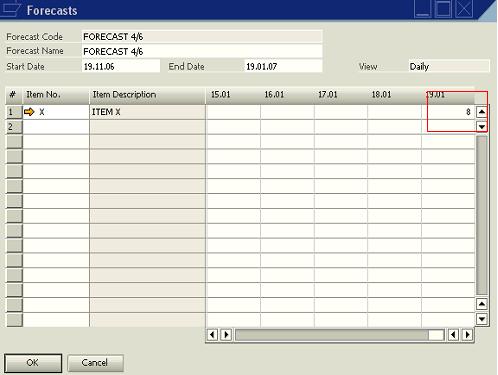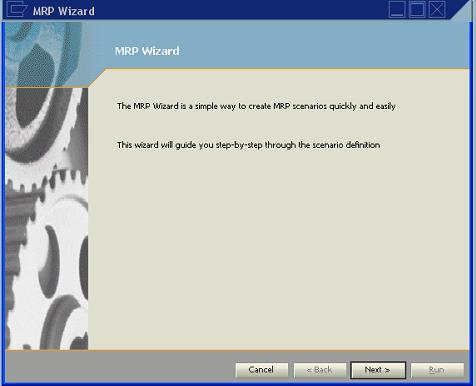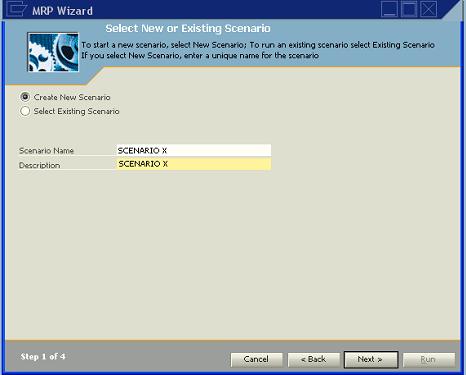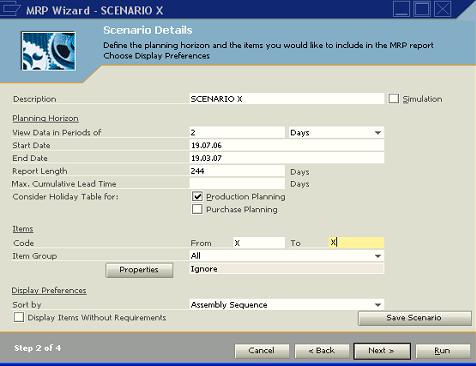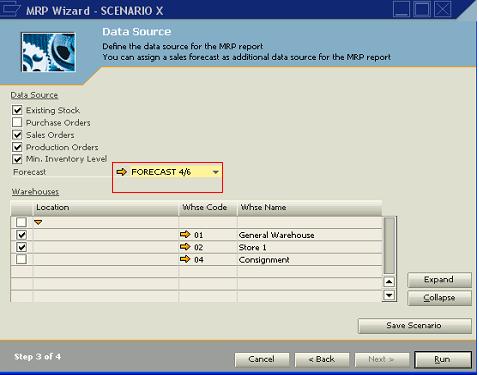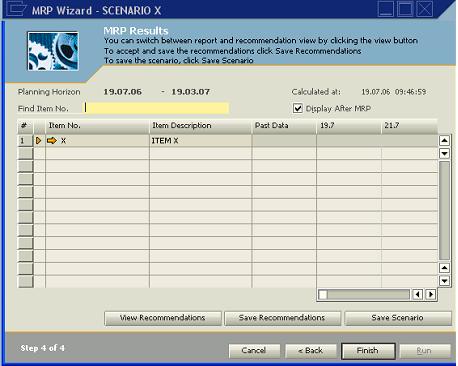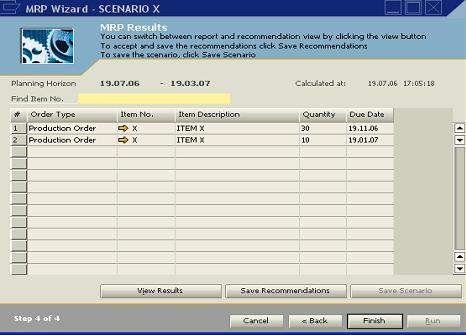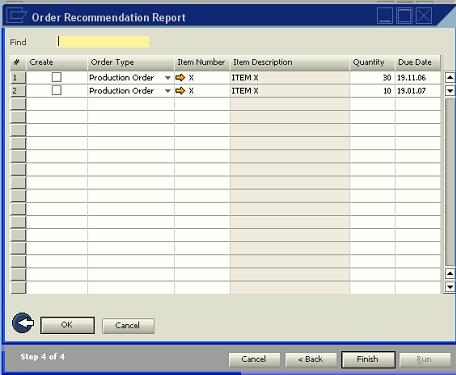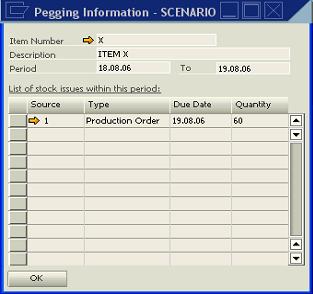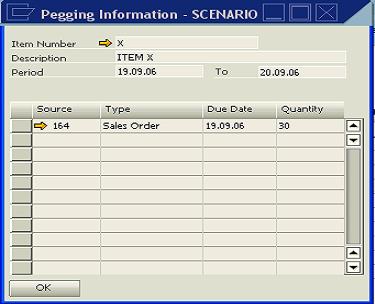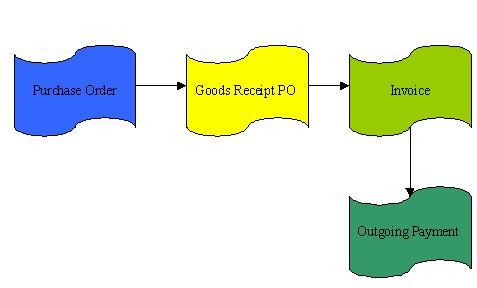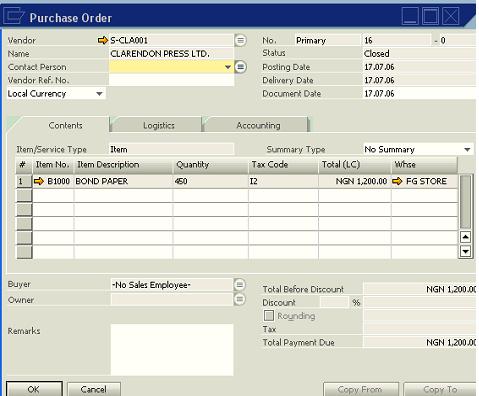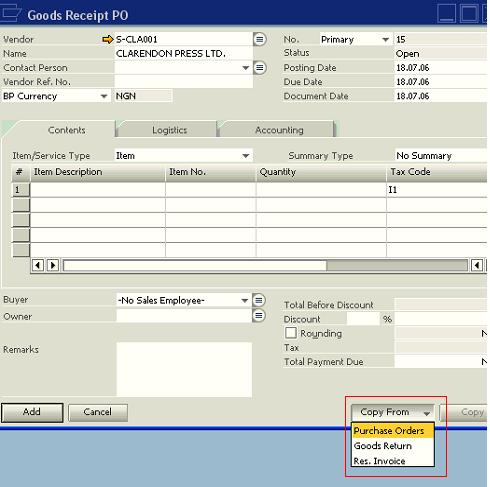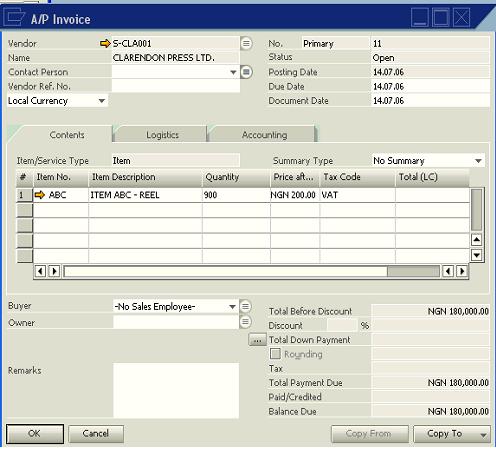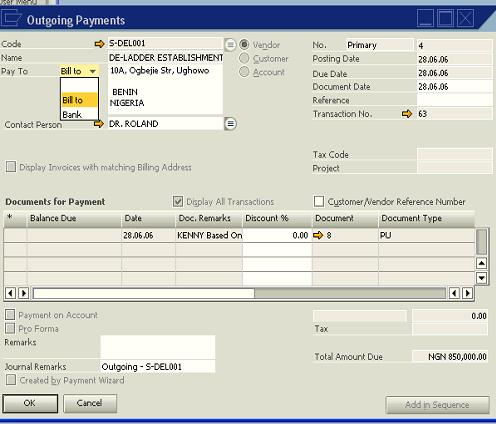July Certification Diet
A. The item rows are not in stock.
B. Special discount groups are the row items.
C. No special prices were defined for the item rows.
D. The item rows have validity/quantity based special prices defined for them.
Answer: D
There are business requirements in which you do not want special prices to depend directly on the business partners, but on the items and associated price lists. If a customer buys an item, and neither a special price nor a discount group has been defined for the customer or this item, the special prices for the price list applies. This is setup under Inventory > Price Lists > Hierarchies and Expansions. When the lines for special price are expanded, the special price is displayed in blue in the Hierarchies and Expansions window.
2. Commission can only be calculated for the following except
A. Sales Employee
B. Item group
C. Item
D. Customers
Answer: B
During system setup, under Administration > System Initialization > General Settings, BP Tab, you can define how commission is calculated. Commission can be awarded based on the sales employee, item or customer specified in the document. This setting influences where you can specify the sales commission percentage, but does not automatically calculate any commission transactions. This setting is not static; it can be changed at any time. Commission calculation cannot be defined for Item group.
3. You want to use the Pick and Pack manager in SAP Business One, what are the statuses available?
A. Open
B. Picked
C. Released
D. Blocked
Answer: A, B, C
The Pick and Pack Manager is used to handle the picking process. The process starts with the creation of a pick list, then to the reporting of picked quantities, and ends with the packaging and delivery of the picked items. The possible Pick and Pack statuses are Open, Released and Picked.
Open - Displays the open Sales Order or Reserve Invoice rows.
Released - Displays the released quantities ready to be picked that exist in the pick list
Picked - Displays the picked quantities.
Blocked is not valid status.
4. What happen when you define the opening balances function and the system currency differs from the local currency?
A. An error message appears
B. You must manually convert the balances
C. The balances are converted automatically
D. It is not possible to enter opening balances when different system and local currencies are used in a company.
Answer: C
When using the opening balances functionality, enter opening balances in the local currency in column OB (LC) only if data is to be entered in the local currency. If the system currency is different from the local currency, the system automatically calculates the opening balances in the system currency and displays the values in column OB (SC). Hence, it is possible to enter opening balances even when the local and system currencies differ and an error message is not displayed as a result. If a foreign currency has been defined for an account, the OB (FC) field will be active. The system automatically calculates the amounts in the local and system currencies, using the valid exchange rate on the value date. It is important to state that opening balance for a multi currency account can only be entered in local currency
5. Which of the following is/are true about the Data Transfer Workbench when it encounters an error?
A. Rollback occurs and all data records that are already imported are removed from the system
B. An error message is displayed and nothing happens.
C. The import process stops after a number of errors, yet to be imported records are stored in an error file
D. The import process stops after a number of errors and all records that have already been imported are retained in the system.
Answer: A, C, D
The Data Transfer Workbench is a tool for data migration. Another functionality that can be used for importing data into SAP Business One is the native import functionality. SAP Business One has a number of ways of handling errors while importing data into the system. When error is encountered while data upload is in progress, a rollback occurs and all data records already imported are removed from the system. Alternatively, the Data Transfer Workbench stops the import process after a certain number of errors and does not rollback. All records that are yet to be imported are stored in an error file while the records that are already imported remains in the system.
6. Which of the following are true about the uses of user defined fields in SAP Business One.
A. It is used for integration into document templates
B. It is a tool used to generate SQL statements
C. It is used to find objects
D. It is used to format data records
Answer: A, C
User defined fields can be used for document template integration, search objects, store additional information such as pictures and files and reporting. It is not a tool for generating SQL Statements. The Query Wizard and Query generator are tools used for generating SQL statements. However, user-defined fields can be displayed in the print layout designer or in the Query Generator window. Also, it is not used for formatting data records.
7. What are the levels of authorization available in SAP Business One?
A. None
B. Read Only
C. Full
D. Peer
Answer: A, B, C
SAP Business One has it's own in built authorization levels. Authorizations allow users to view, create, and update documents and you assign them according to data ownership definitions. This is to enforce some sort of data security and controlled access. By default, a new user has no authorizations. The three possible levels available are None, Read Only and Full.
None: the user has no access to that functionality.
Read Only: the user can only view, but not change data.
Full : the user is able to display and modify data for that functionality per module.
Peer is solely related to data ownership concept in which the user and the owner share the same manager on their corresponding employee records.
8. The types of Balance Sheet accounts includes the following except
A. Asset
B. Equity
C. Liability
D. Cost of Sales
Answer: D
A typical Chart of accounts is made of two major types of accounts, namely the balance sheet accounts and profit and loss accounts. For the balance sheet accounts, three types of accounts are available. They are Asset, Liability and Capital and Reserve, otherwise called equity. Cost of sales is a typical Profit and Loss accounts and not a balance sheet account.when a balance sheet report is processed, the asset account is displayed on the active side while the liability and equity accounts are displayed on passive side.
9. Where in SAP Business One is the system and local currencies configured.
A. Administration > System Initialization > Company Details
B. Administration > System Initialization > General Setting
C. Administration > setup > Financials > Currencies
D. Financials > Chart of Accounts
Answer: A
SAP Business allows you to manage your accounts using system currency, local currency and multi currency. These definition can be made under Administration > System Initialization > Company Details, choose Basic Initialization. The system and the Local currency can be the same or different, however, the reporting currency is the system currency. This definition is not made under Administration > System Initialization > General Settings. All currencies used in a company are defined under Administration > Setup > Financials > Currencies. The chart of accounts is accessed under Financials > Chart of Accounts. The chart of accounts is an index of all general ledger accounts; hence, system and local currencies are not defined there.
10. Is it possible to have a negative balance in a credit field? True or False.
Answer: True
It is possible to display credit balances in negative. This is setup under Administration >System Initialization >Company Details >Basic Initialization tab. By default, the debit balances are displayed with a negative sign. The system displays a credit balance with a negative sign because the credit balance depicts liabilities in an asset account. This setting is sensitive because it impacts on Opening balances for G/L account and business partners. Furthermore, the settings cannot be changed after transactions have been posted.
